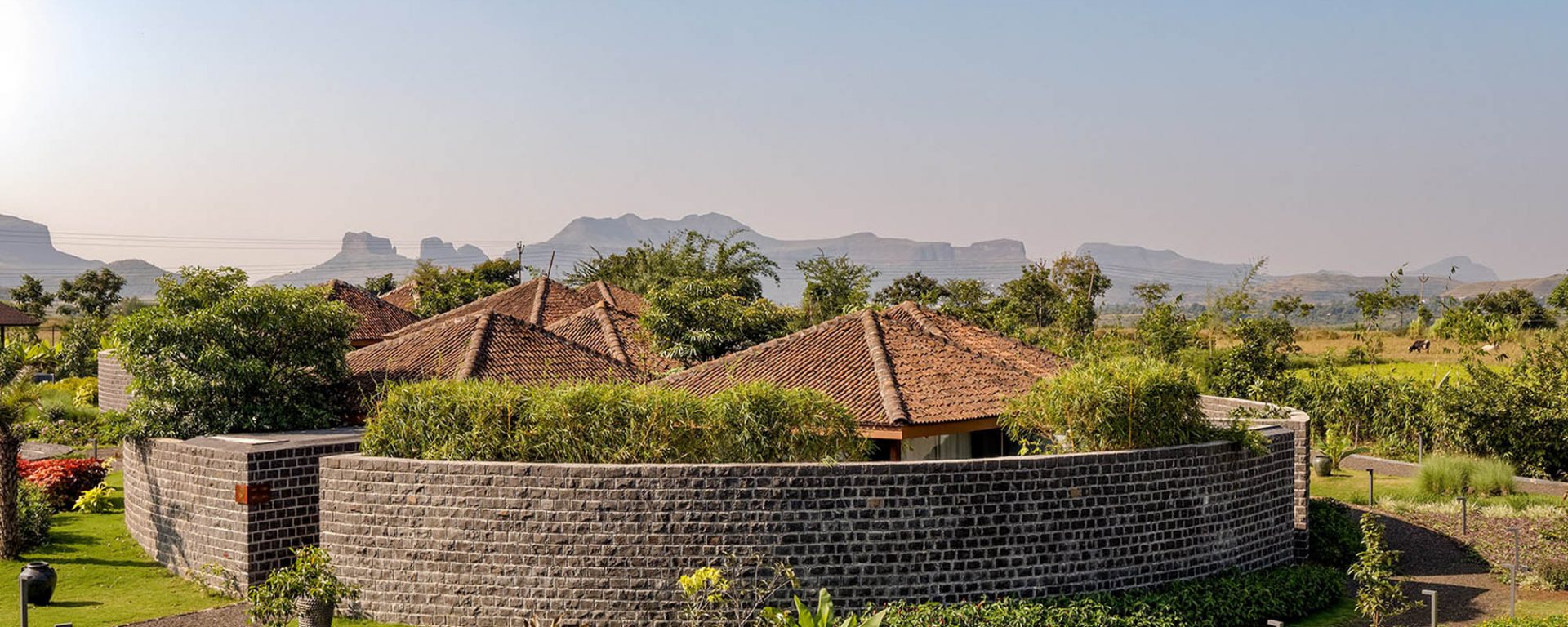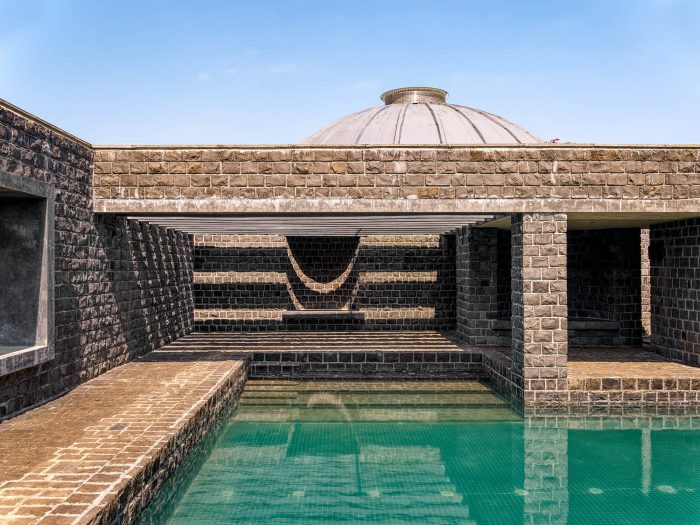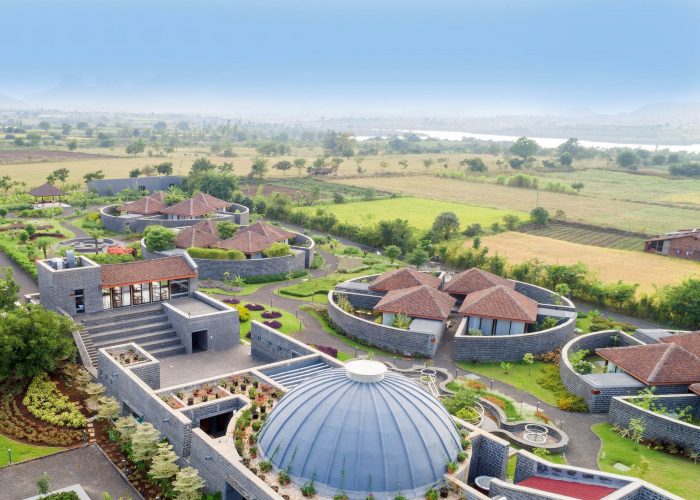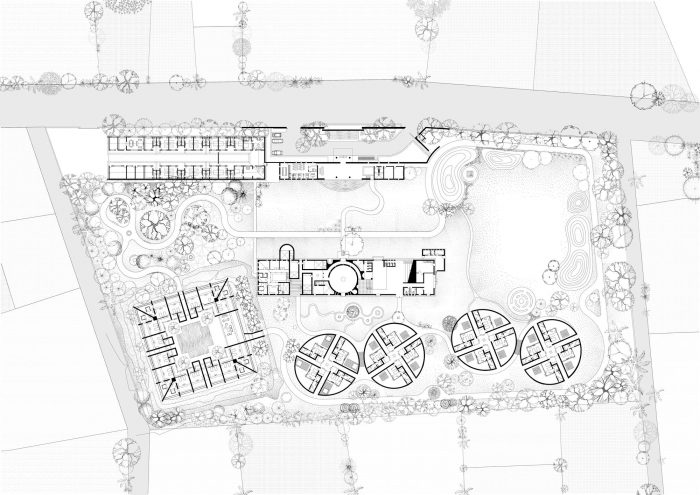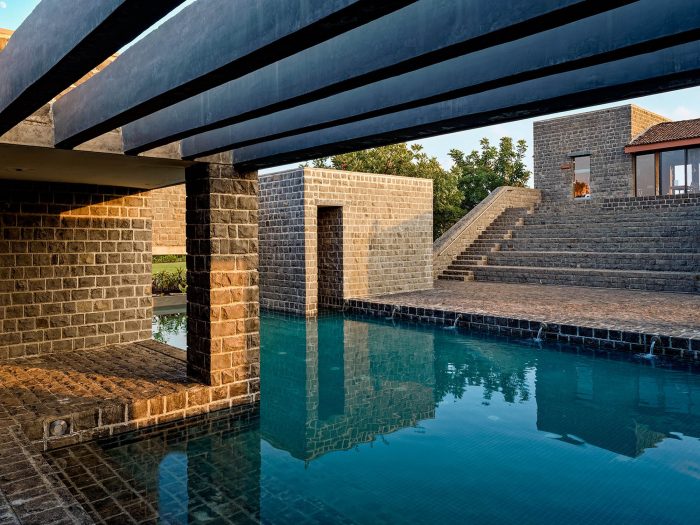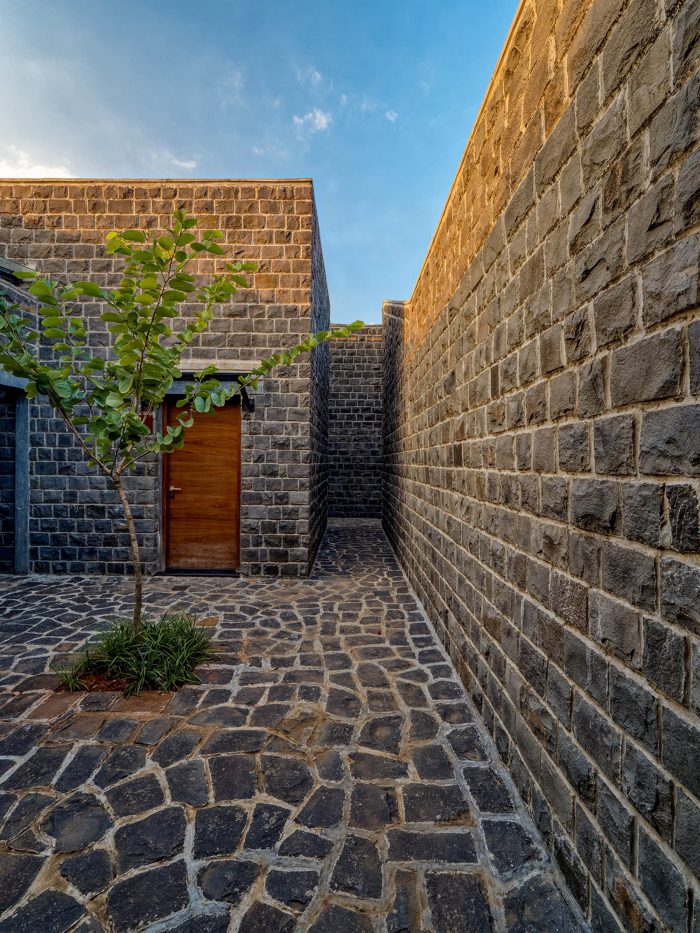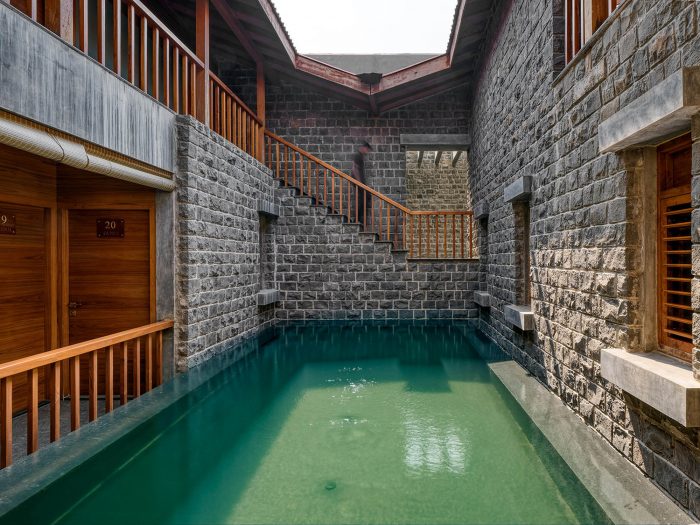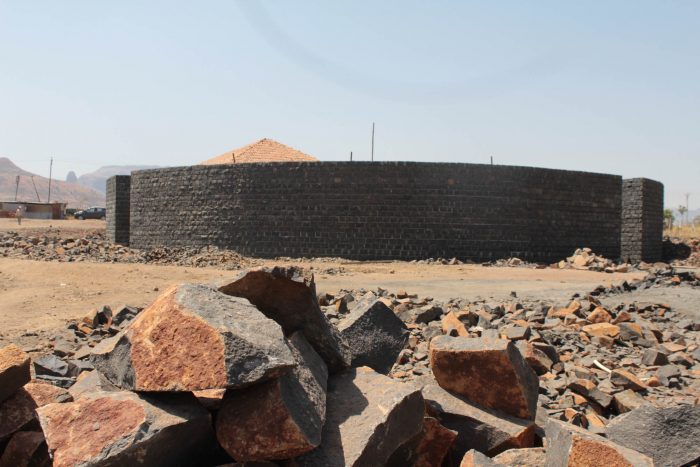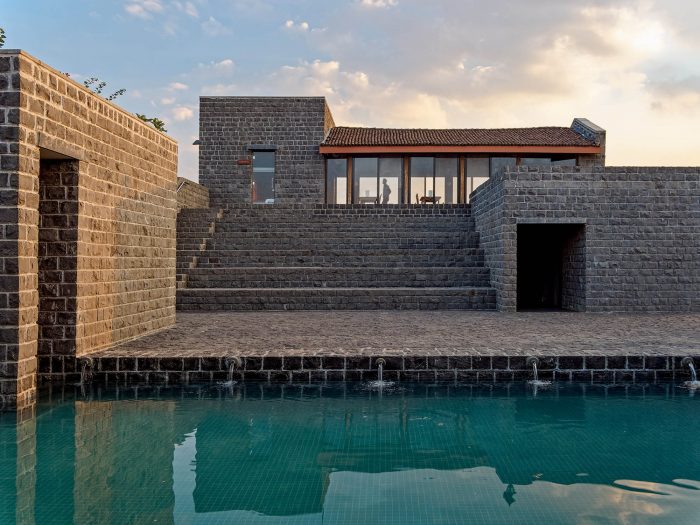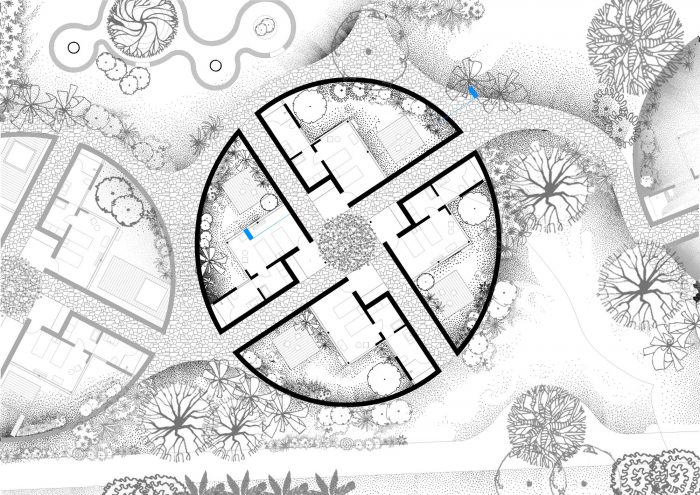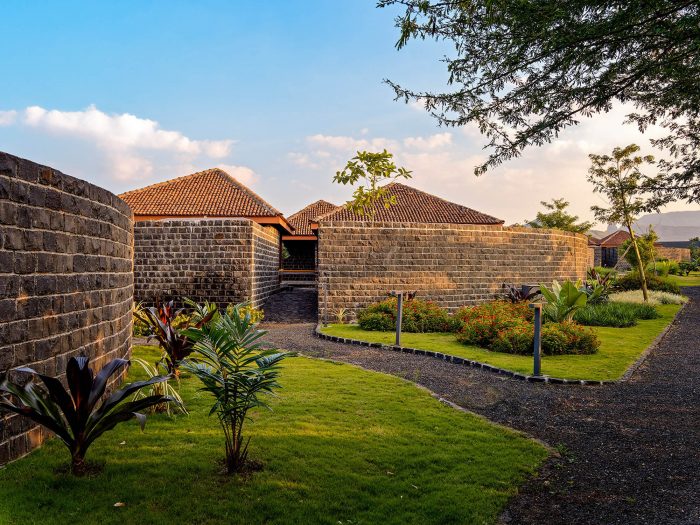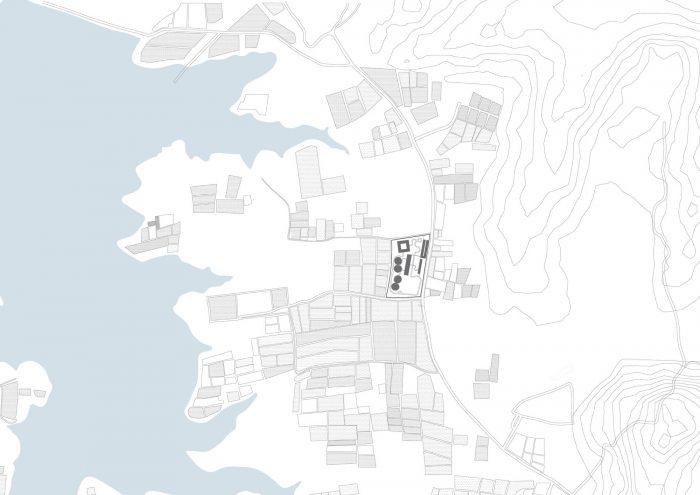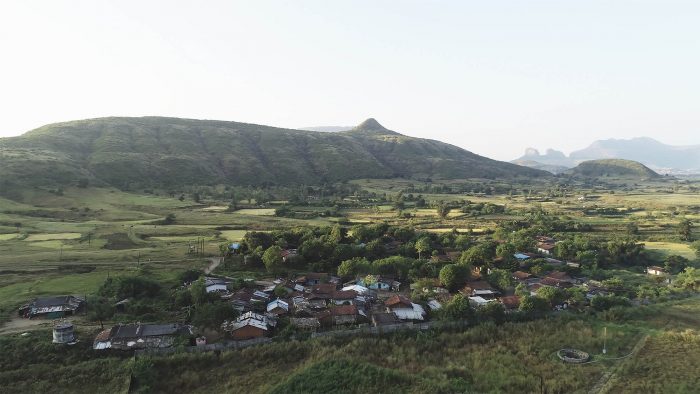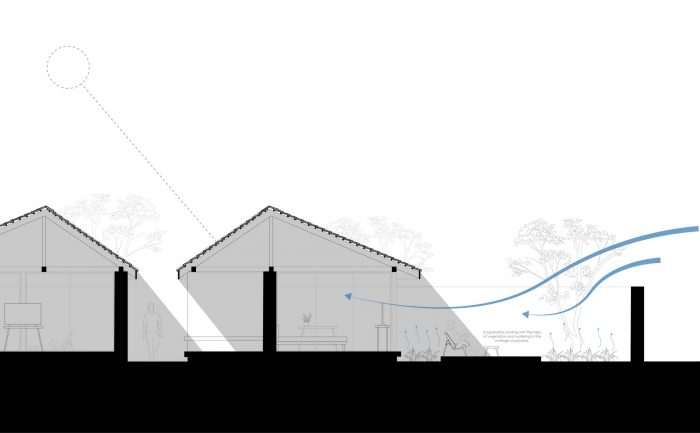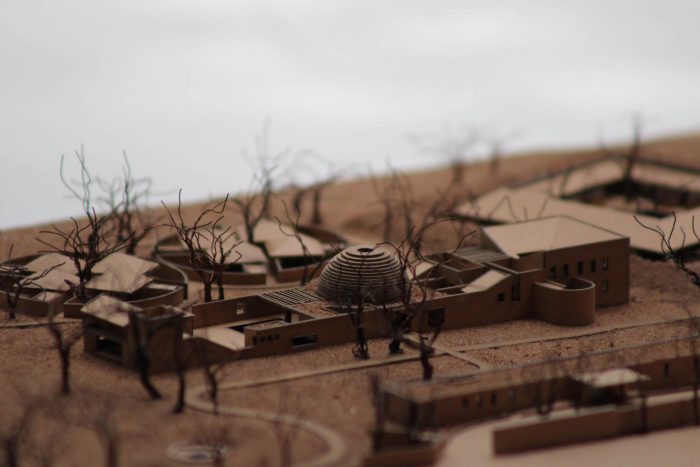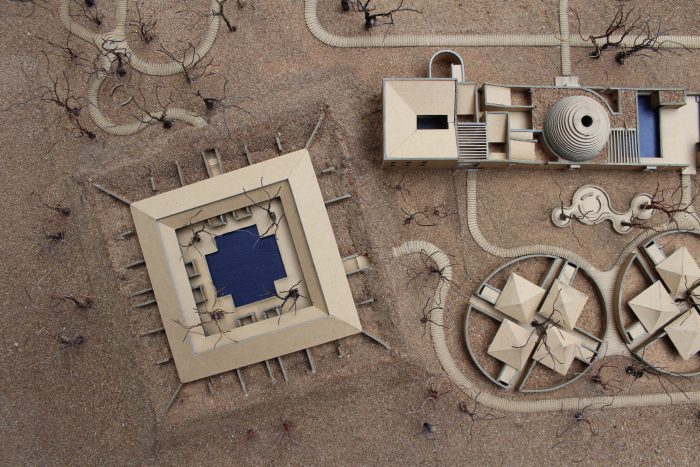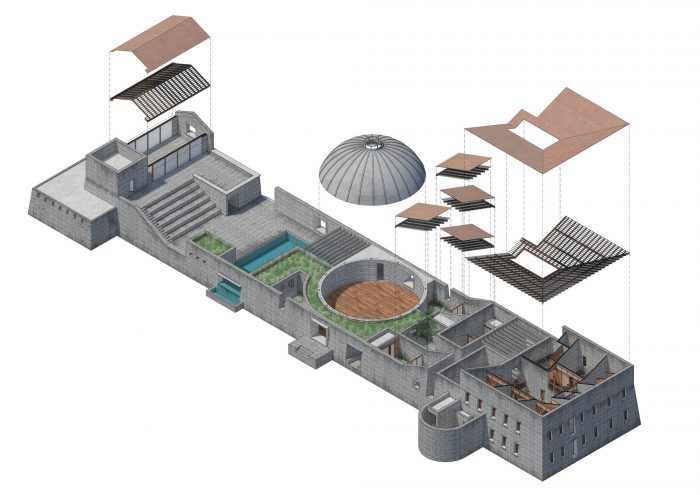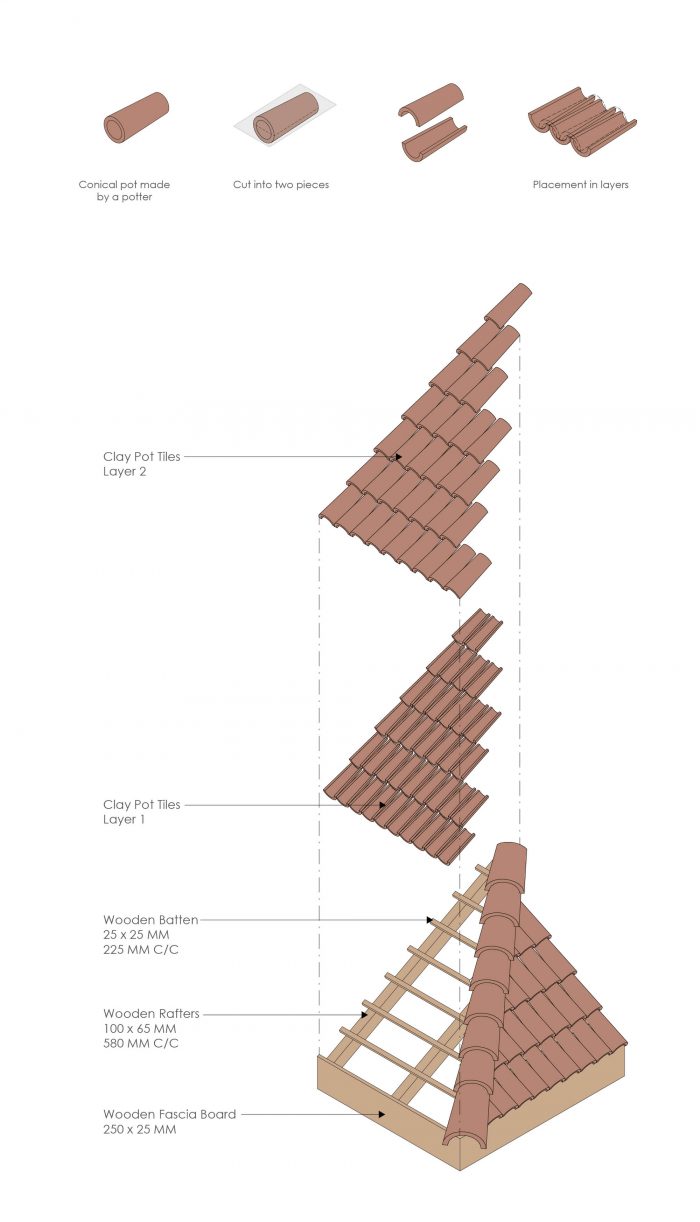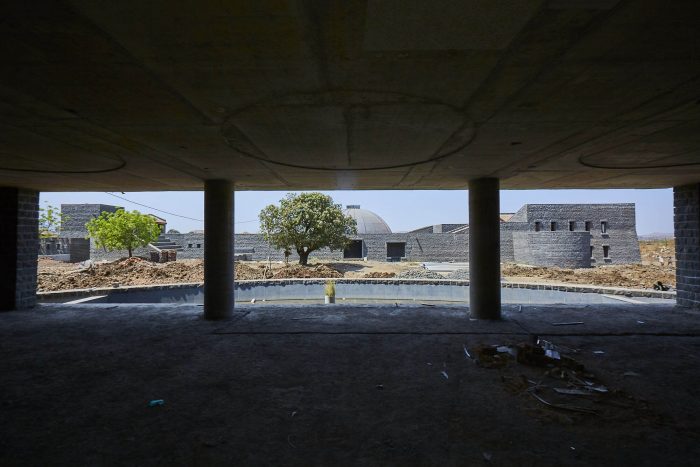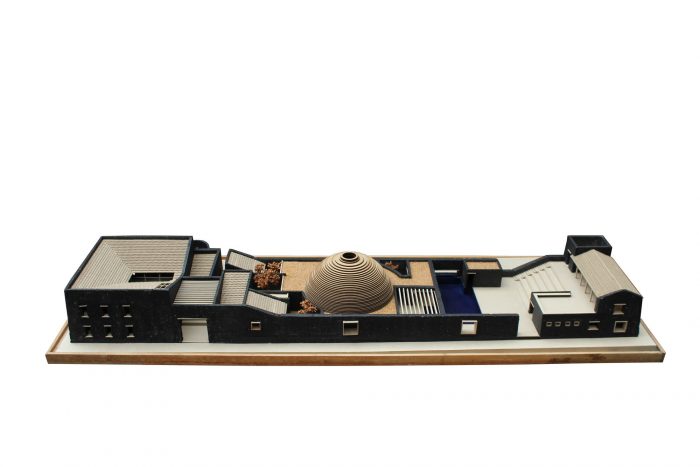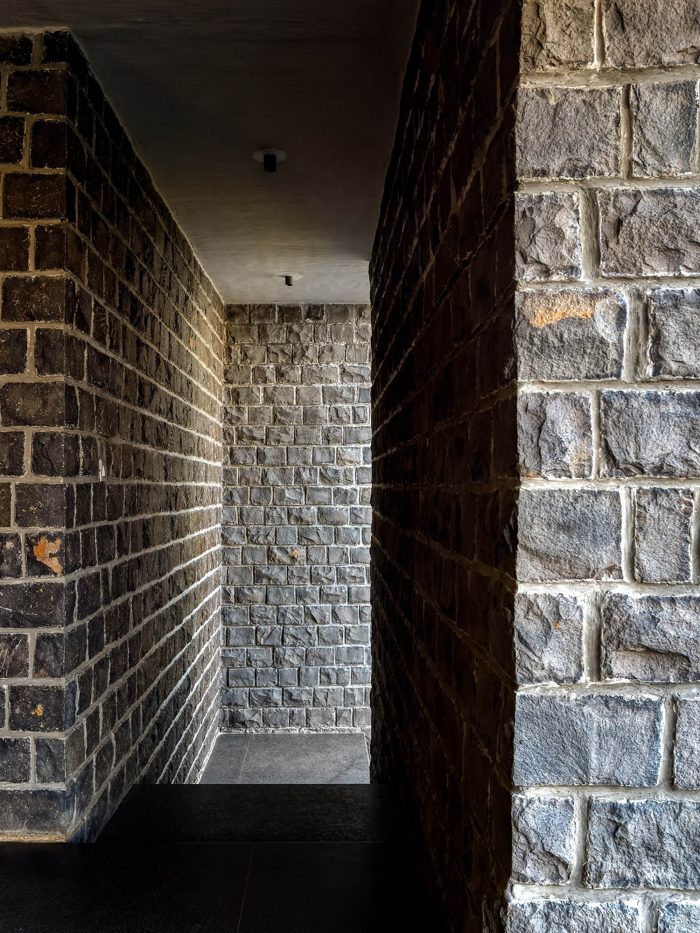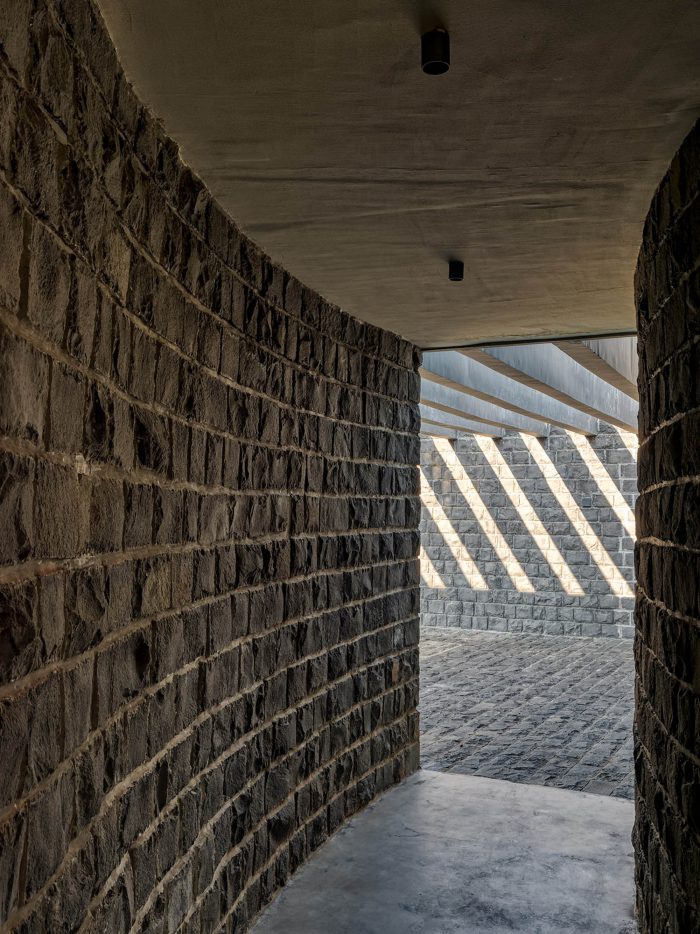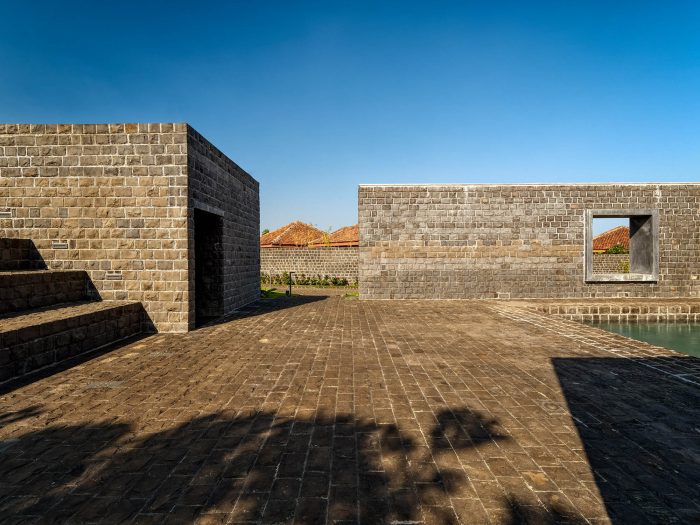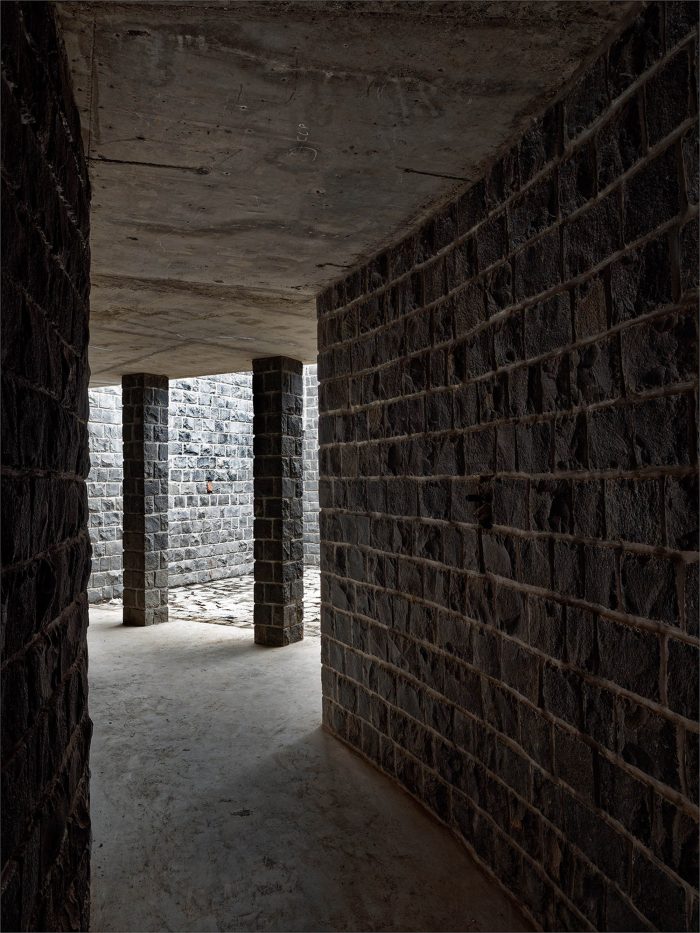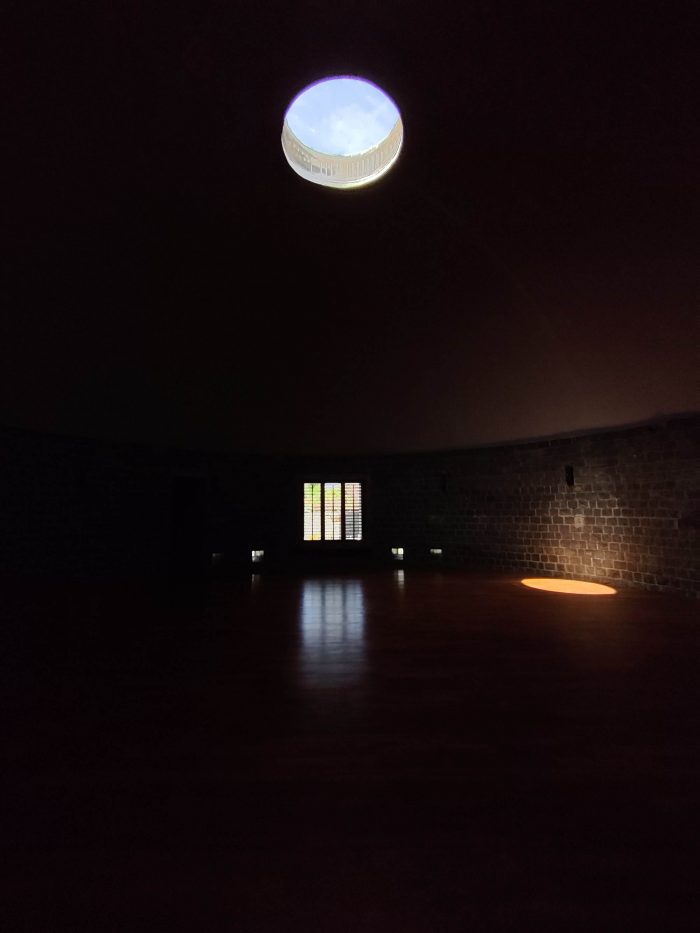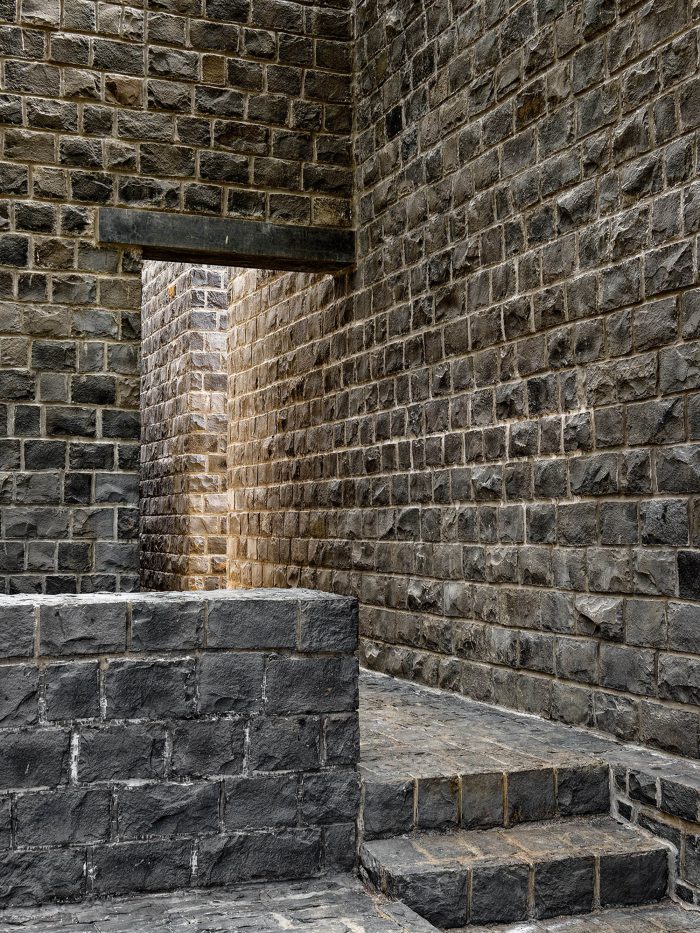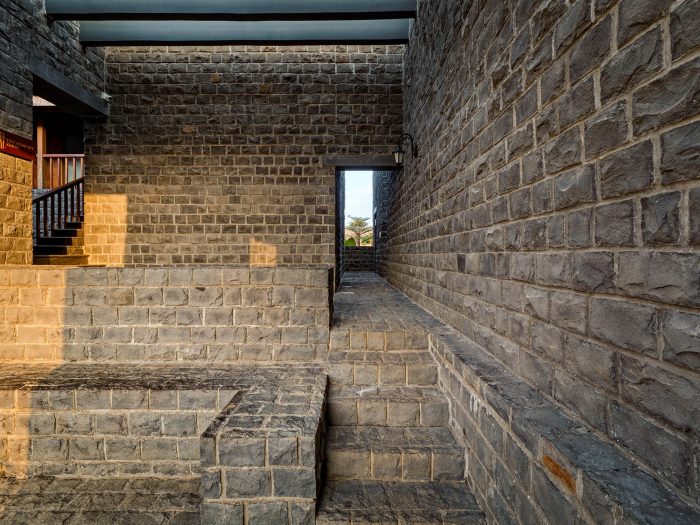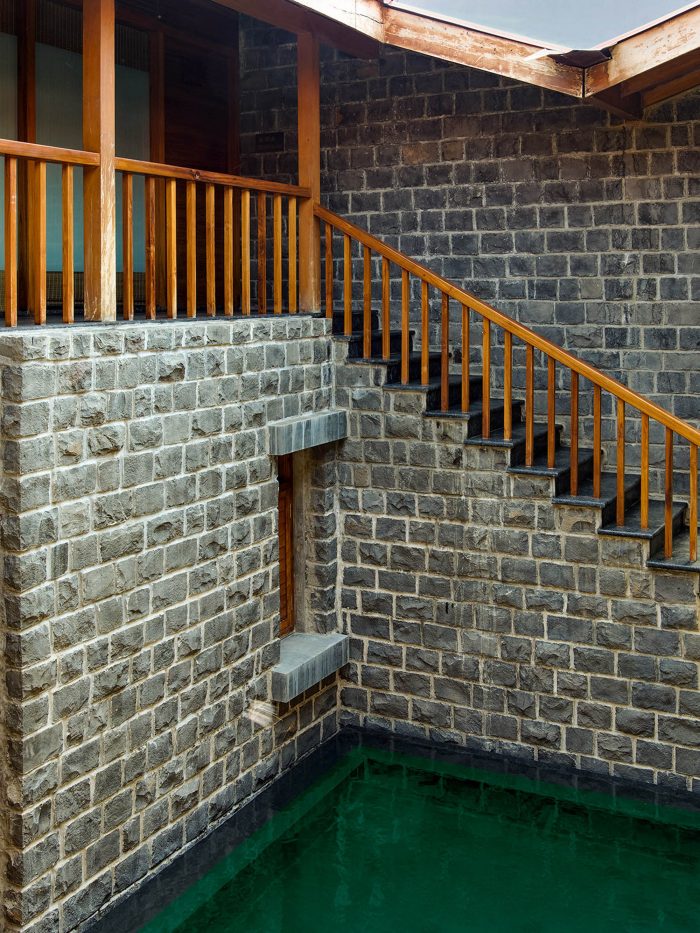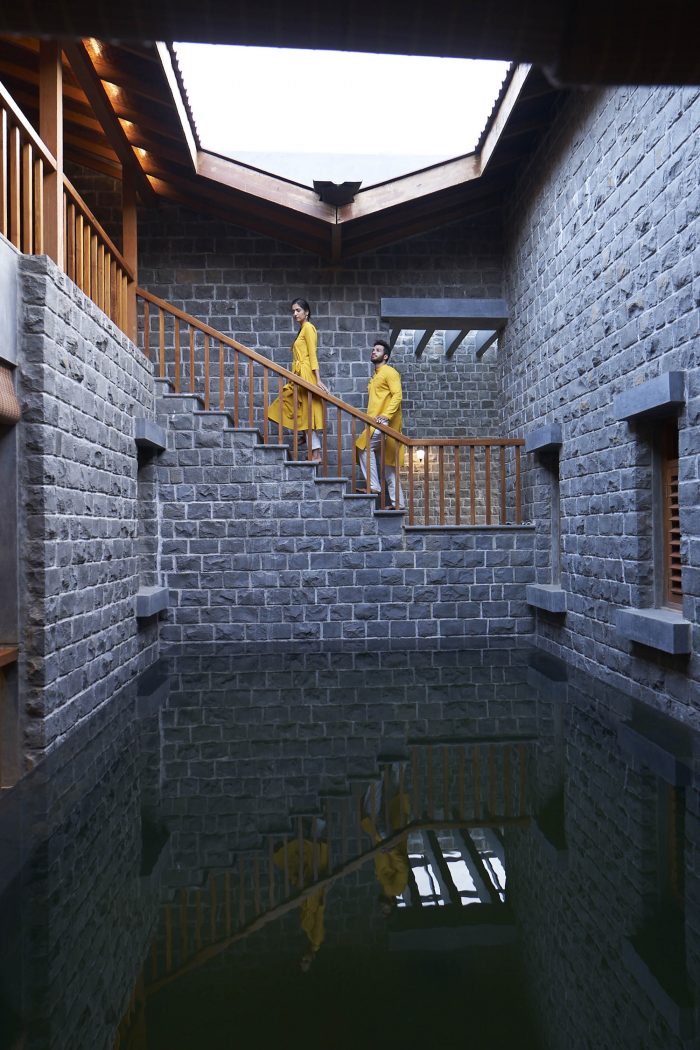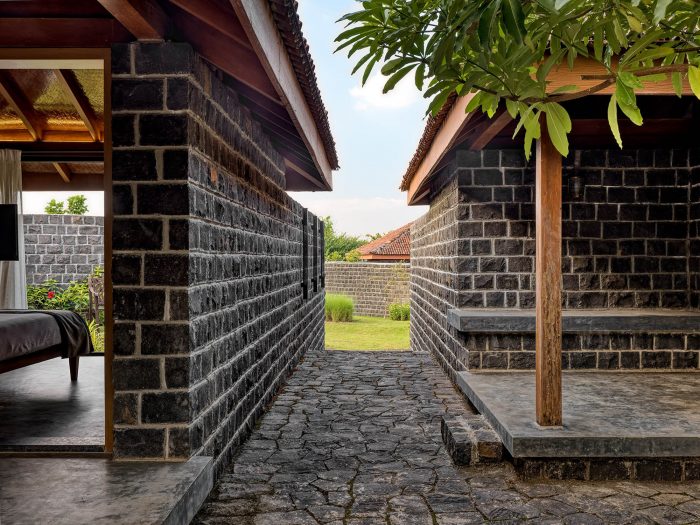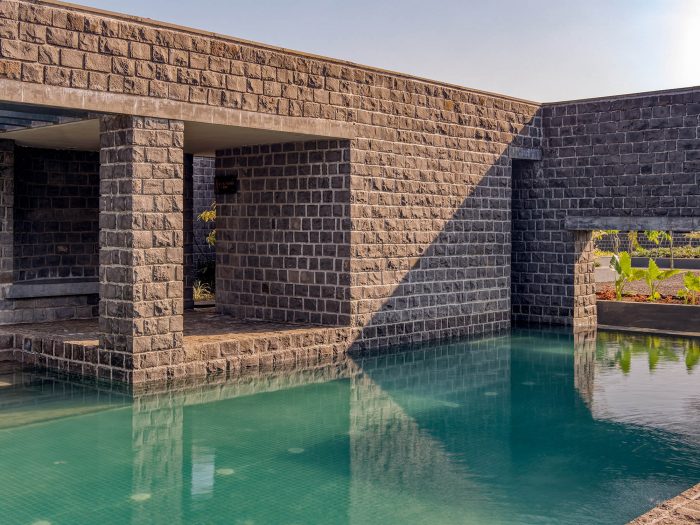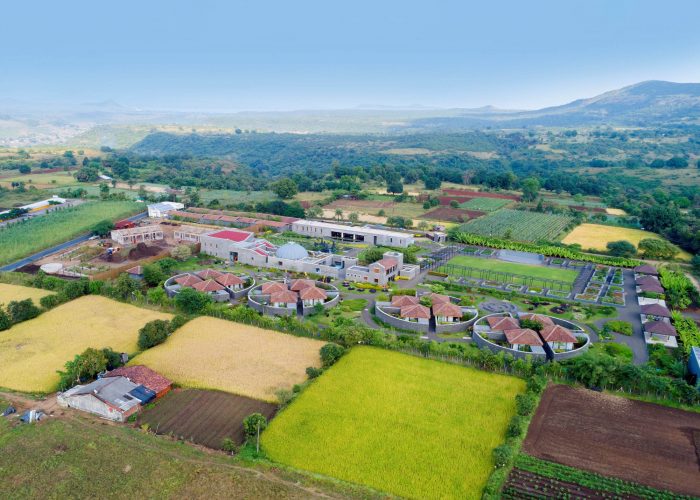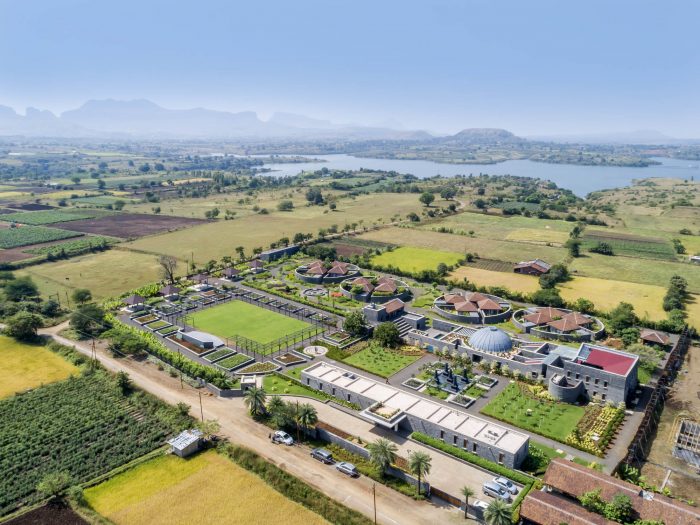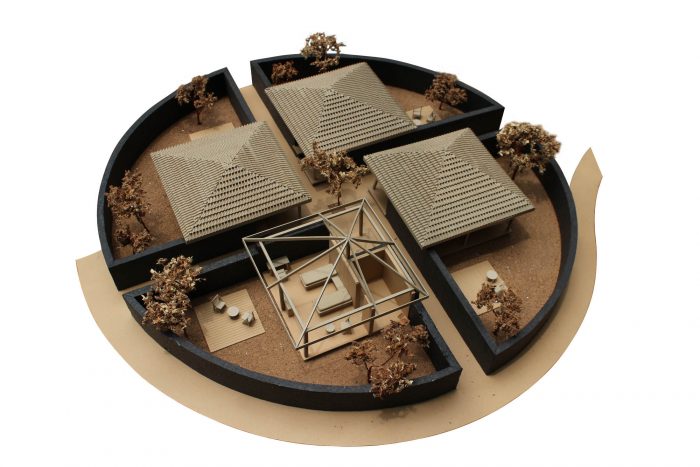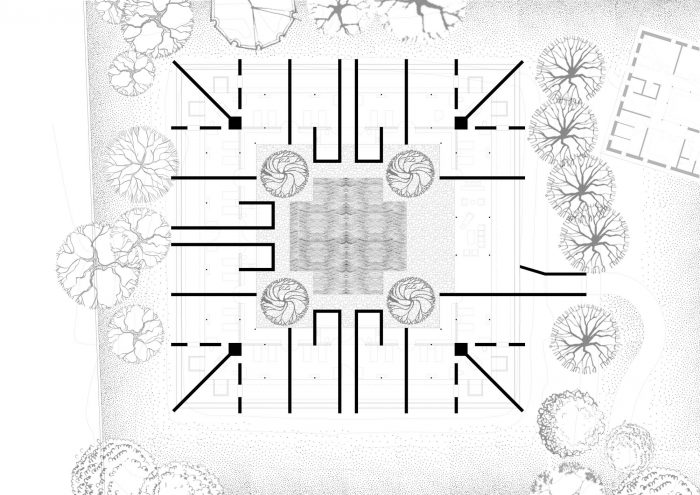背景 – 该遗址最引人注目的特点之一是其环境。该遗址位于巨大的Sahyadri山脉、令人着迷的Gautami Godavari大坝的水域和多色调的农田、零星的树木、牛群、水牛、绵羊、山羊等组成的马赛克之间。
Context – One of the most striking features of the site is its setting. The site is situated between the gigantic Sahyadri mountain range, the mesmerizing waters of Gautami Godavari dam and a mosaic of multi-toned farmlands, sporadic trees, cattle, cows, buffaloes, sheep, goat and so on.
该地区的气候炎热干燥,尤其是在夏季,但享有宜人的季风和冬季条件。该项目的第一个意图是设计响应这种环境的空间。大多数空间的设计都是以最小的墙体来创造阴凉,以使自然光和通风最大化。所有的建筑都有穿孔的庭院和绿化袋,使项目具有透气性,降低了环境温度,增加了干热气候下所需的水分。
The region has a hot and dry climate especially during summers, but enjoys pleasant monsoons and winter conditions. The first intention of the project was to design spaces that responded to this setting. Most of the spaces are designed to create shade with minimum walls to allow maximum natural light and ventilation. All the buildings are perforated with courtyards and green pockets makes the project breathable and decreases the ambient temperature and adds the necessary moisture required in a hot and dry climate.
材料 – 该项目的第二个意图是了解并纳入贝泽村和周围定居点的建筑做法。通常情况下,这里的房屋有一个石头基座,木材框架,砖墙或泥墙,屋顶用粘土罐瓦。像大多数其他活动一样,建筑活动被视为一套合作活动和技能、劳动和资源的相互交换形式。例如,泥瓦匠为农民建造房屋,而农民则以谷物或提供其他技能来回报他。在这种程度上,该项目设计了三种材料。玄武岩石料、木材框架和锅瓦屋顶。由于该项目位于偏远地区,它有助于雇佣当地的工匠,并与他们合作,他们在使用这些材料方面有着悠久的历史。混凝土和钢铁在该项目中被有意识地保持在最低限度。所有的材料都是在当地采购的(在20到50公里范围内),减少了能源的体现。
Materiality – The second intention of the project was to understand and incorporate building practices from the Beze village and surrounding settlements. Typically, houses here have a stone plinth, timber framework, brick or mud walls and clay pot tiles for roofing. Construction activities, like most other activities are seen as a cooperative set of activities and form of mutual exchange of skills, labour and resources. For instance, a mason builds a house for a farmer who in turn pays him back in grains or by offering other skills. To that extent, the project is designed with three materials: Basalt Stone, Timber frame and pot-tile roof. Since the project is in a remote location, it helped to employ and collaborate with the local craftsmen who have a long lineage of working with these materials. Concrete and steel are consciously kept to a minimum in the project. All materials have been sourced locally (within 20 to 50 km), reducing the embodied energy.
石材。场地上的石头工作主要由Wadari社区承担。瓦达里种姓,特别是在农村经济中,是一个专业的石匠社区,特别是在印度的马哈拉施特拉邦和北卡纳塔克邦地带定居。该地区有大量的玄武岩石料,由石匠在现场手工采掘、凿制和安装。大部分的项目都是用玄武岩制作的–承重墙、台阶、庭院、景观等。这样做是为了刻意为建筑创造一个整体的特征,就像一个坚实的石模轻轻地坐在景观上。
Stone: The stone work on the site was mainly carried by the Wadari community. The Wadari caste, especially in the rural economy, are a community of expert stonemasons particularly settled in Maharashtra and Northern Karnataka belt of India. Basalt stone, available in plenty in the region, is hand-quarried, chiseled and fitted on site by the stonemasons. Most of the project is made with Basalt -load bearing walls, steps, courtyards, landscape etc. This is done to deliberately create a monolithic character for the building, like a solid stone mould sitting gently on the landscape.
木材:在这个项目中使用了两种木材:1)Haladu(黄色调的木材,它的名字来自Haladi或姜黄。这主要用于屋顶系统和某些空间的支柱。2)升级改造的木材–印度柚木,从该地区100到150座破旧的建筑中打捞出来的。主要由当地木匠完成,由苏塔领导,他是一位木匠大师,将他的技能世代相传。
Wood: There are two kinds of timber that are used in this project: 1) Haladu (yellow toned timber, which derives its name from Haladi or turmeric. This is primarily used for the roofing system and columns in certain spaces. 2) Upcycled Wood – Indian teakwood, salvaged from 100 to 150 old dilapidated buildings in the region. Majorly done by local carpenters headed by a sutar, who is a master-carpenter, carrying his skills through generations.
粘土砖。用于屋顶的粘土瓦片是由Kumbhar(来自陶工社区)使用几十年来学到的传统方法制作的,通常是在社区内。这是Kumbhar有史以来收到的最大一批锅瓦。由于Kumbhar让不同的家庭成员和其他村民参与到这一过程中,它成为社区的一个良好的经济机会。
Clay Pot Tiles: Clay pot tiles, which are used for roofing are made by a kumbhar (from the potter community) using the traditional methods learnt over decades usually within the community itself.The changing economy and building practices in the villages narrowed their practice down to only pot making. This was the largest consignment of pot tiles the kumbhar had ever received. As the kumbhar involved various family members and other villagers in the process, it became a good economic opportunity for the community.
空间性–从空间上讲,该项目打算刻意唤起一种居住在该地区历史上突出的建筑类型中的感觉。从历史上讲,一些政治和精神实践在Sahyadri山和Trimbekashwar的景观中留下了他们的建筑痕迹。其中最吸引人的是中世纪的堡垒–通常建在山顶上;瓦达斯–富商们精美的中世纪房屋;孔德–自哈拉帕城市以来流行的地下水体,但在整个地区的寺庙城镇中明确可见;Chaityas–美丽而繁琐的佛教洞穴和寺院;Ghats–通往各种河流的神圣的河边阶梯,建筑和景观融为一体。这些建筑类型中的每一个都有一个非常具体和令人难忘的空间质量,该项目在各个部分都调用了这种质量。
Spatiality – Spatially speaking, the project intends to deliberately invoke a sense of inhabiting the historically prominent architectural types of the region. Historically speaking, several political and spiritual practices have left their architectural traces in the landscape of Sahyadri hills and Trimbekashwar. Among which the fascinating ones are the medieval forts -typically built on top of the mountains; Wadas -beautifully crafted medieval houses of the rich merchants; Kunds -subterranean water bodies popular since the Harappan cities but explicitly seen in the temple towns across the regions; Chaityas -the beautiful and tedious Buddhist caves and monasteries; Ghats – the sacred river-front stretches of steps leading to various rivers where architecture and landscape becomes one. Each of these building types have a very specific and memorable spatial quality which the project invokes in various parts.
例如,在由五个广场组成的设施区中,每个广场都被单独设计为具有五种不同的功能和相应的空间质量。自然疗法集群为Wada;按摩室为庭院式房屋;瑜伽和冥想穹顶为Chaityas;游泳池为Kund;露天剧场和餐厅为Ghats。这五个广场被合并成一个长形区块,并有特定的过渡空间,以创造一个具有不同体量、光影质量、纹理和运动模式的空间序列,这些都是从上述建筑类型、地区和对各自功能的深入理解中学习来的。这种方法的结果之一是,它创造了一个异质同构的空间。
For instance, in the amenities block, made of five squares, each of the squares is designed separately with five different functions and a corresponding spatial quality: Naturopathy cluster as Wada; Massage rooms as courtyard houses; yoga and meditation dome as Chaityas; Swimming pool as Kund; and the amphitheatre and restaurant as ghats. The five squares are merged into one long block, with specific transition spaces, to create a spatial sequence with different volumes, qualities of light and shadow, textures and movement patterns that are learnt from the above mentioned architectural types, from the region, and an in-depth understanding of the respective functions. One of the results of such an approach is that it creates a heterogeneously homogeneous space.
客房主要被构思为来自一个具有蜿蜒的街道和庭院的小定居点的集群。每个集群被组织成一个圆圈,自由地放置在自然倾斜的地面上,以创造一条蜿蜒的路径,围绕所有集群的不同层次。四座别墅共享的公共庭院成为一个社交空间,让客人们可以相互交流,坐在阳台上欣赏远处的风景。
The guest rooms are mainly conceived as clusters from a small settlement with winding streets and courtyards. Each cluster is organized as a circle, freely placed on a natural sloping ground to create a meandering path around all the clusters at different levels. The common court shared by four cottages becomes a social space for the guests to interact with each other and enjoy the distant views of the landscape, sitting in their verandahs.
建筑物的单体特征也有助于在景观、天空和建筑空间之间形成连续的对比,从而始终将人的注意力从建筑推到景观、周围环境,甚至可能推到自己身上。
The monolithic character of the buildings also helps in framing a continuous contrast between the landscape, the sky, and the space of the building, thereby always pushing the attention of the person from the building to the landscape, the environment around and perhaps even to oneself.
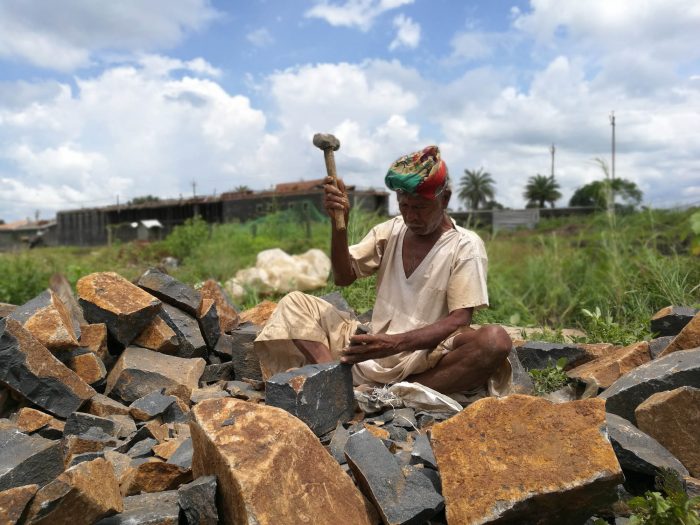


Architects: A for Architecture
Area: 3900 m²
Year: 2019
Photographs: Hemant Patil
Design Team:Ajay Sonar, Monali Patil, Tejas Pai
Clients:Viveda Wellness Retreat
Landscape:Monali Patil (a for architecture), Mahesh Nampurkar (Suman Shilp)
Architects:A for Architecture
Landscape Design:Suman Shilp, A for Architecture
City:Trimbak
Country:India

